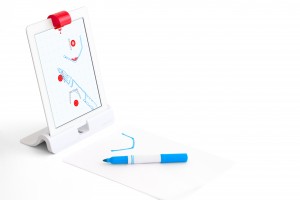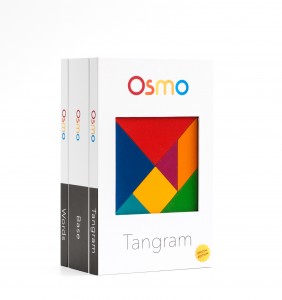Ingenuity. Ingenuity is a beautiful thing. It’s a beautiful word. It is at the heart of engineering. It is also something I strive to have in every company that K9 Ventures invests in. A lot startup ideas are an incremental or marginal improvement over something that already exists in another form. But, once in a while you come across something that make you have that “Aha! experience.” I’ve been fortunate to have had the chance to work with several companies which deliver that experience and today I’m so excited to be able to talk about one that delivers on the “Aha! experience” in spades.
Kids love the iPad. It’s a fact. And I know that first hand because every time my 2.5yr old son gets his hands on one, it’s almost impossible to separate them and it inevitably leads to a tantrum. My son started using the iPad (much to my wife’s chagrin) and the ripe old age of 13 months (thanks to some of the prior work by Sooinn Lee, co-founder of LocoMotive Labs).
But for a child using the iPad, the interaction is often what I like to describe as “hold and poke” interaction. And it’s also often a solitary experience, creating an invisible tunnel between the child and the device. As a result, parents are often concerned about how much “screen-time” their kids get vs. “play time”.
At the same time, kids these days are not satisfied with the “play time” experience. Simple building blocks, or drawing is fun, but only for a few minutes, before the child gets bored. They’ve tasted the level of engagement and interaction they get from screens and that’s the level of engagement they crave.
This is where Osmo comes in. First, watch this video:
The best work I can think of to describe Osmo is ingenious. It’s ingenious in so many ways.

It is ingenious in how it blends screen-time with play-time — where you can now have objects and interactions (like drawing) in the physical world that are recognized by and can influence what happens in the on-screen world. It’s a blended-play experience.
It is ingenious in how extending the play area from the screen to the surface of the table, now makes it possible for it to be a social experience with multiple people playing together (or against) each other. No more of the invisible tunnel that disconnects you from the world, instead, you’re engaging and connecting with the people around you.

It is ingenious in the simplicity of how it works — by using a simple mirror to enable the camera on the iPad to look at the surface of the table. And then the magic happens in software — with state of the art computer vision and object recognition techniques pioneered by the team that are designed to be super responsive and performant.

I first met Pramod Sharma, the co-founder of Tangible Play, the company behind Osmo, while we were both at Stanford. After Stanford Pramod went to Google, and helped to build the Google Book Scanner, that was used to digitize millions of books. Pramod and I reconnected after almost a decade when he brought a home-made prototype of what is now Osmo to show me. It was love at first sight. The simplicity of the mirror, couple with the enormous potential of what could be done in software was evident.
Pramod and Jerome (also a co-founder of Tangible Play) met at Google. Prior to that Jerome worked at Ubisoft and Lucas Arts. Jerome is one of the most creative people I have met. The breadth of his expertise combined with the attention to design and every detail is remarkable.
I’m honored to work with such brilliant and creative founders. The Tangible Play team has built Osmo into a truly awe inspiring “Aha experience!” The video gives you a sense of that, but you really do need to experience it yourself while playing with your own friends and family. It’s the human connection that Osmo creates that makes it so wonderful.
Join the play movement at playosmo.com
You can follow me on Twitter at @ManuKumar or @K9Ventures for just the K9 Ventures related tweets. K9 Ventures is also on Facebook and Google+.


